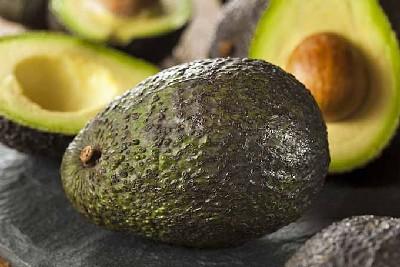
To achieve ‘Avocado Freedom,’ US should find ways to open up more
Ding Gang
“Three dollars for one of these?!” I stared in disbelief at the avocado prices on my computer screen. Years ago, when I was working in New York, avocados were one of the cheapest fruits in the supermarket, selling for just 99 cents each.
Looking at the price tags on e-commerce platforms, I can suddenly understand why TikTok is full of darkly humorous hashtags like “Avocado Freedom.”
The term “Avocado Freedom” described the ability to buy avocados without worrying about the price – a luxury that now feels out of reach for many.
Over the past decade, global demand for avocados has skyrocketed, driven by their reputation as a “superfood” and the rise of health-conscious diets.
But this price spike isn’t just about supply and demand – it’s also tied to Washington’s tariff policies and closely tied to the US administration’s recent renewed tariffs on steel and aluminum.
Washington once again wields the tariff stick.
It’s being referred to as the Melt and Pour Requirement, which is a policy that requires steel to be made in North American blast furnaces and aluminum to be cast in North American smelters. In simpler terms, it’s like a rule that says the steel has to be made in North America, and cannot be imported from other countries, such as China.
This is akin to putting GPS trackers on the supply chain, ensuring even semi-finished Chinese steel processed in Mexico or Canada can’t slip through. Under the new tariff policies, even seemingly unrelated products like avocados are caught in the crossfire. Ninety percent of avocados in the US come from Mexico, but the steel shelves they’re stored on, the aluminum refrigerated trucks used to transport them, and even the tin-coated steel packaging all face higher costs due to the tariffs. These added expenses inevitably trickle down to consumers, making everyday items like avocados more expensive. Reconstructing the supply chain for steel and aluminum disrupts global trade, and if more countries retaliate, this could escalate into a full-blown tariff war.
The interconnected global trade system – where “I rely on you, and you rely on me” – is now being replaced by an “I sanction you, and you sanction me” cycle of retaliation. Everyone ends up worse off, battered and bruised in the process. Avocados in the American market are a good example of this.
The US’ intention is clear: to stop other countries from making more money off the US while ensuring the US makes more money off others.
In theory, this means getting more countries to buy more American goods. However, in practice, the outcome of these unilateral tariffs is the opposite: more countries are forced to buy fewer American-made products.
Instead of picking fights on the tariff battlefield and inviting retaliation from all sides, it makes more sense to figure out how to make American goods as desirable as Air Jordans in the Chinese market. The goal should be to make American products indispensable to Chinese consumers. Take Tesla’s new energy storage mega-factory, which recently opened in China. Its products are likely to soon become hot commodities.
Perhaps we should take a leaf out of Starbucks’ book, and use their “hidden menu” strategy to untangle this mess. The basic idea is to offer customers a menu that allows them to participate in creating their unique products. This satisfies their needs and turns them into loyal, repeat customers.
China certainly has the financial capacity to buy American goods. The question is: Can you provide products that China actually wants to buy, and if so how?
Solving trade imbalances boils down to answering this question: How can you get China to buy more American goods? This dynamic balancing act requires constant improvement and competition; perhaps more important is confidence in one’s competitiveness. Americans should find ways to open up more. That’s the key to help more American families to realize “Avocado Freedom.”
The writer is a senior editor with the People’s Daily, and currently a senior fellow with the Chongyang Institute for Financial Studies at the Renmin University of China
